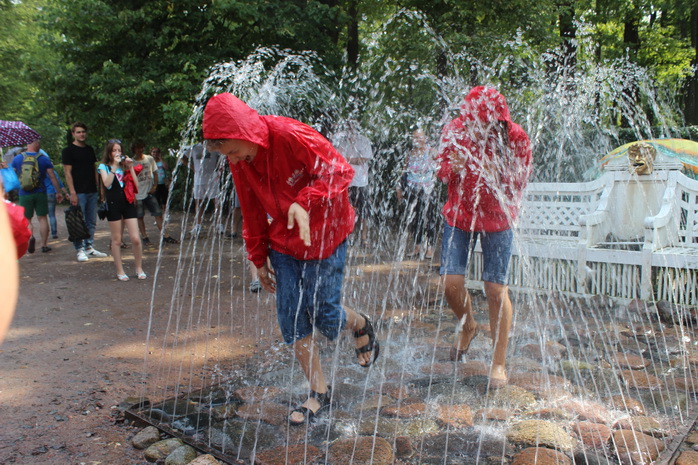WAVE GOODBYE TO THE WINTER’S TALE 2023!
08.01.2024
09.08.2013

The “foreign” part of the project “NucKids” is behind us and the walks through the most beautiful cities of the Central Europe are also in the past. Now it’s time to get acquainted with the Russian sights. “NucKids” went on the excursion to the Constantine Palace and Petergof.
“Lovers’ bench”, “Oak”, “Eva”, “Sheaf” – more than 150 fountains are working on the territory of Petergof. Walking on the territory of the late residence of the imperial dynasty, “NucKids”‘ve visited of course not all of them. But even the number of the fountains, that they’ve seen, was enough to dive into the cloud of water splashes and atmosphere of a good mood.
“Done!”- Egor Kashcheev, Marina Dudorova and property director Anna Gorbas said after getting out of the circle of the pulsatory streams in front of the “lovers’ bench”. The children were covering their heads with the brand coats, that didn’t actually help them a lot. But the “nuclear” extreme lovers didn’t get upset. To come out of Petergof being dry can be an option for anyone else except them.
The gorgeous fountains of Petergof’ve been working for 300 years already thanks to the Great Grotto. Having learnt its construction and taken many pictures in the park, the children went on the excursion to the Grand Palace. The children’ve seen royal rooms, chambers and the cabinets of the Russian rulers, magnificent interiors, that were reconstructed by the historians after the plunder and destruction of the palace by the Nazis.
“When I’m walking here, I imagine myself being a lady in a beautiful puffy dress. It’s so great!”,- Kristina Chubrikova from Hungary was smiling.
Emil Mariani, who has visited Russia many times, was enjoying the birches more than anything else.
“They’re very beautiful and we don’t have them in France”,- Emil said.
Having learnt that the children of the workers of the nuclear branch from nine countries take part in the project, one guide wondered, how the participants of the project have been chosen. And having learnt, that “NucKids-2013” have come through very strict castings, she said:
“It means, that our guests are the most precious ones”.
So, it’s hard to disagree with this statement.